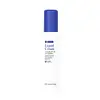What's inside
What's inside
 Key Ingredients
Key Ingredients

 Benefits
Benefits

 Concerns
Concerns

 Ingredients Side-by-side
Ingredients Side-by-side

Water
Skin ConditioningCaprylic/Capric Triglyceride
MaskingOctyldodecanol
EmollientGlycerin
HumectantCetearyl Glucoside
EmulsifyingButyrospermum Parkii Butter
Skin ConditioningCera Alba
EmollientSorbitan Olivate
EmulsifyingAloe Barbadensis Leaf Juice Powder
Skin ConditioningXanthan Gum
EmulsifyingParfum
Masking1,2-Hexanediol
Skin ConditioningCaprylyl Glycol
EmollientCetearyl Alcohol
EmollientAcrylates/C10-30 Alkyl Acrylate Crosspolymer
Emulsion StabilisingSodium Hydroxide
BufferingHydrolyzed Soy Protein
HumectantTocopherol
AntioxidantTropolone
Skin ConditioningGlycine Soja Oil
EmollientWater, Caprylic/Capric Triglyceride, Octyldodecanol, Glycerin, Cetearyl Glucoside, Butyrospermum Parkii Butter, Cera Alba, Sorbitan Olivate, Aloe Barbadensis Leaf Juice Powder, Xanthan Gum, Parfum, 1,2-Hexanediol, Caprylyl Glycol, Cetearyl Alcohol, Acrylates/C10-30 Alkyl Acrylate Crosspolymer, Sodium Hydroxide, Hydrolyzed Soy Protein, Tocopherol, Tropolone, Glycine Soja Oil
Water
Skin ConditioningGlycerin
HumectantCaprylic/Capric Triglyceride
MaskingGlyceryl Stearate
EmollientPolyacrylate Crosspolymer-11
Emulsion StabilisingZinc PCA
HumectantPhenoxyethanol
PreservativeC15-19 Alkane
SolventCeteareth-20
CleansingBHT
AntioxidantCeteareth-12
EmulsifyingCetearyl Alcohol
EmollientCetyl Palmitate
EmollientAllantoin
Skin ConditioningDiphenyl Dimethicone
EmollientSqualane
EmollientTriethylene Glycol
MaskingCamellia Sinensis Leaf Extract
AntimicrobialCentella Asiatica Leaf Extract
Skin ConditioningCladosiphon Okamuranus Extract
Skin ConditioningSalix Alba Bark Extract
AstringentDecyl Glucoside
CleansingCoffea Arabica Seed Extract
Masking1,2-Hexanediol
Skin ConditioningCitrus Aurantium Bergamia Leaf Extract
AstringentPinus Densiflora Leaf Extract
AntimicrobialWater, Glycerin, Caprylic/Capric Triglyceride, Glyceryl Stearate, Polyacrylate Crosspolymer-11, Zinc PCA, Phenoxyethanol, C15-19 Alkane, Ceteareth-20, BHT, Ceteareth-12, Cetearyl Alcohol, Cetyl Palmitate, Allantoin, Diphenyl Dimethicone, Squalane, Triethylene Glycol, Camellia Sinensis Leaf Extract, Centella Asiatica Leaf Extract, Cladosiphon Okamuranus Extract, Salix Alba Bark Extract, Decyl Glucoside, Coffea Arabica Seed Extract, 1,2-Hexanediol, Citrus Aurantium Bergamia Leaf Extract, Pinus Densiflora Leaf Extract
 Reviews
Reviews

Ingredients Explained
These ingredients are found in both products.
Ingredients higher up in an ingredient list are typically present in a larger amount.
1,2-Hexanediol is a synthetic liquid and another multi-functional powerhouse.
It is a:
- Humectant, drawing moisture into the skin
- Emollient, helping to soften skin
- Solvent, dispersing and stabilizing formulas
- Preservative booster, enhancing the antimicrobial activity of other preservatives
This ingredient is an emollient, solvent, and texture enhancer. It is considered a skin-softener by helping the skin prevent moisture loss.
It helps thicken a product's formula and makes it easier to spread by dissolving clumping compounds.
Caprylic Triglyceride is made by combining glycerin with coconut oil, forming a clear liquid.
While there is an assumption Caprylic Triglyceride can clog pores due to it being derived from coconut oil, there is no research supporting this.
Learn more about Caprylic/Capric TriglycerideCetearyl alcohol is a mixture of two fatty alcohols: cetyl alcohol and stearyl alcohol. It is mainly used as an emulsifier. Emulsifiers help prevent the separation of oils and products. Due to its composition, it can also be used to thicken a product or help create foam.
Cetearyl alcohol is an emollient. Emollients help soothe and hydrate the skin by trapping moisture.
Studies show Cetearyl alcohol is non-toxic and non-irritating. The FDA allows products labeled "alcohol-free" to have fatty alcohols.
This ingredient is usually derived from plant oils such as palm, vegetable, or coconut oils. There is debate on whether this ingredient will cause acne.
Due to the fatty acid base, this ingredient may not be Malassezia folliculitis safe.
Learn more about Cetearyl AlcoholGlycerin is already naturally found in your skin. It helps moisturize and protect your skin.
A study from 2016 found glycerin to be more effective as a humectant than AHAs and hyaluronic acid.
As a humectant, it helps the skin stay hydrated by pulling moisture to your skin. The low molecular weight of glycerin allows it to pull moisture into the deeper layers of your skin.
Hydrated skin improves your skin barrier; Your skin barrier helps protect against irritants and bacteria.
Glycerin has also been found to have antimicrobial and antiviral properties. Due to these properties, glycerin is often used in wound and burn treatments.
In cosmetics, glycerin is usually derived from plants such as soybean or palm. However, it can also be sourced from animals, such as tallow or animal fat.
This ingredient is organic, colorless, odorless, and non-toxic.
Glycerin is the name for this ingredient in American English. British English uses Glycerol/Glycerine.
Learn more about GlycerinWater. It's the most common cosmetic ingredient of all. You'll usually see it at the top of ingredient lists, meaning that it makes up the largest part of the product.
So why is it so popular? Water most often acts as a solvent - this means that it helps dissolve other ingredients into the formulation.
You'll also recognize water as that liquid we all need to stay alive. If you see this, drink a glass of water. Stay hydrated!
Learn more about Water